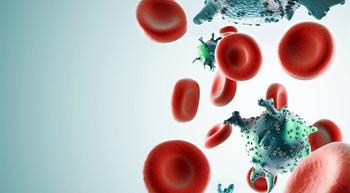
FDA Approves Combination for Adjuvant Treatment of Melanoma Subtypes
The combination therapy of Tafinlar (dabrafenib) and Mekinist (trametinib) was granted Food and Drug Administration (FDA) approval for the treatment of patients with BRAF V600E– or V600K–positive stage 3 melanoma following complete resection.
The combination therapy of Tafinlar (dabrafenib) and Mekinist (trametinib) was granted Food and Drug Administration (FDA) approval for the treatment of patients with BRAF V600E— or V600K–positive stage 3 melanoma following complete resection.
The approval is based on findings from the phase 3 COMBI-AD study, in which adjuvant treatment with Tafinlar and Mekinist reduced the risk of relapse or death by 53 percent compared with placebo for patients with BRAF-mutant stage 3 melanoma.1 After a median follow-up of 2.8 years, the three-year relapse-free survival (RFS) rate with Tafinlar and Mekinist was 58 percent compared with 39 percent for placebo.
"The purpose of adjuvant therapy is to improve recurrence-free and overall survival in our patients with melanoma. Adjuvant therapy options are crucial today because more than half of patients have a recurrence after surgery," John M. Kirkwood, M.D., Usher Professor of Medicine, Director of Melanoma and Skin Cancer, University of Pittsburgh, said in a statement.
"We developed the first adjuvant therapy approved by the FDA 22 years ago, and now we have the first effective oral targeted therapy combination that prevents relapse among patients with BRAF-mutated melanoma that has spread to lymph nodes,” added Kirkwood.
The COMBI-AD study randomized 870 patients with BRAF V600E/K stage 3 melanoma to receive Tafinlar plus Mekinist (438 patients) or placebo (432 patients). All patients were within 12 weeks of complete surgical resection and had stage 3a (18 percent), 3b (41 percent) and 3c (40 percent) disease. Tafinlar was given at 150 mg twice daily with Mekinist at 2 mg once daily for 12 months. The salvage therapies received following the study were similar in each arm, and, in some cases, included a rechallenge with BRAF/MEK inhibition.
The baseline characteristics were similar between groups. In the combination arm, the median age of patients was 50 years and 91 percent of tumors had the BRAF V600E mutation with the remainder having the V600K alteration. Most patients (92 percent) had an ECOG performance status of 0. Twelve percent of patients in the combination group had in-transit metastases versus 8 percent with the placebo. Seventeen percent of patients had four or more positive lymph nodes, with the remainder having fewer than four.
The median RFS was not reached with the combination versus 16.6 months for placebo. RFS was improved with Tafinlar/Mekinist across all subgroups. Hazard ratios across all subgroups ranged from 0.33 to 0.55 in favor of Tafinlar and Mekinist versus placebo.
Early data for overall survival (OS) showed that 86 percent of patients in the combination arm were alive at 3 years versus 77 percent with placebo. At the interim analysis, the OS advantage was not yet deemed statistically significant, according to predefined criteria that required a P value of .000019.
The one-year OS rates were 97 percent versus 94 percent and the two-year OS rates were 91 percent and 77 percent for the combination and placebo groups, respectively. The one-year RFS rates were 67 percent versus 56 percent and the 2-year rates were 67 percent versus 44 percent for Tafinlar and Mekinist versus placebo, respectively. The most common locations of recurrence, for the combination and placebo, respectively, were locoregional (12 percent vs 25 percent), distant (22 percent vs 29 percent), and both local and distant (2 percent vs 2 percent).
The risk of distant metastases or death was reduced by 49 percent with the combination versus placebo. Additionally, there was a 53 percent improvement in freedom from recurrence with the combination.
Adverse events (AEs) were experienced by 97 percent of those treated with Tafinlar and Mekinist versus 88 percent with placebo. The rates of grade 3/4 AES were 41 percent and 14 percent for the combination and placebo, respectively. Overall, AEs led to discontinuation for 26 percent of those in the combination arm versus 3 percent with placebo. The most common all-grade AEs, which were mostly grade 1/2, with the combination were pyrexia (63 percent), fatigue (47 percent), and nausea (40 percent). There were no fatal adverse events with the combination of Tafinlar and Mekinist.
The FDA initially granted an accelerated approval to the combination of Tafinlar and Mekinist for patients with BRAF-mutant metastatic melanoma in January 2014. The combination received a full approval in November 2015, and is now also indicated for the treatment of patients with BRAF-mutant non—small cell lung cancer.




